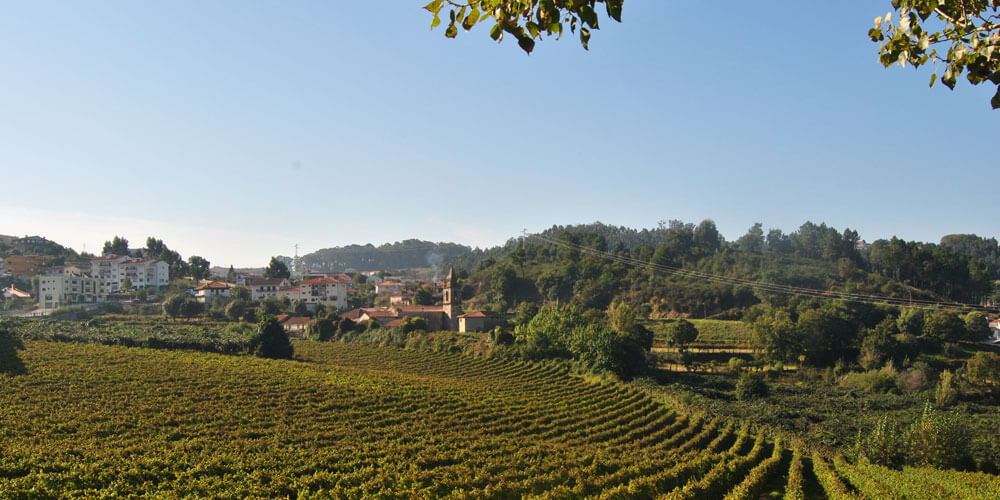
Terras de Felgueiras Vinho Verde Escolha Branco
- White wine
- off dry
- no vintage
- Portugal - Vinho Verde
- Diverse Rebsorten
Ready to ship today,
Delivery time appr. 1-3 workdays

Muros Antigos Alvarinho 2023
- White wine
- dry
- 2023
- Portugal - Vinho Verde
- Alvarinho
- Year of birth 2018: Robert Parker: 89 points
- Year 2018: Revista de Vinhos: 17 points
Ready to ship today,
Delivery time appr. 1-3 workdays

Quinta de Gomariz Loureiro Vinho Verde Branco 2023
- White wine
- dry
- 2023
- Portugal - Vinho Verde
- Loureiro
Ready to ship today,
Delivery time appr. 1-3 workdays

Quinta da Lixa o Tal da Lixa Sparkling Extra...
- Schaumwein
- dry
- no vintage
- Portugal - Vinho Verde
- Arinto, Avesso
Ready to ship today,
Delivery time appr. 1-3 workdays

Quinta da Lixa Loureiro 2023
- White wine
- dry
- 2023
- Portugal - Vinho Verde
- Loureiro
Ready to ship today,
Delivery time appr. 1-3 workdays

Muros Antigos Loureiro 2023
- White wine
- dry
- 2023
- Portugal - Vinho Verde
- Loureiro
- Decanter 2021: Silver - 91 points
Ready to ship today,
Delivery time appr. 1-3 workdays

Terras de Felgueiras Espadeiro Rosé
- rosé wine
- off dry
- no vintage
- Portugal - Vinho Verde
- Espadeiro Tinto
Ready to ship today,
Delivery time appr. 1-3 workdays

Aveleda Vinho Verde Alvarinho 2023
- White wine
- off dry
- 2023
- Portugal - Vinho Verde
- Alvarinho
- MUNDUS vini 21st Grand International Wine Award: Gold Medal
- Wine Enthusiast Best Buy 2017: 89 points
Ready to ship today,
Delivery time appr. 1-3 workdays
More Information
Vinho Verde The Refreshing White Wine
On the international markets, the Vinho Verde region is particularly known for its white wines, but it is also worth trying the reds. Like the white, the red wine from Vinho Verde is light, fresh, sparkling and should preferably be drunk chilled. It enjoys particular popularity with the locals, is often drunk in traditional restaurants and goes particularly well with grilled sardines. Vinho Verde is also available as rosé and sparkling wine.
The Many Sub-Regions Of Vinho Verde
The climate in Vinho Verde varies greatly, which is especially noticeable in the nine sub-regions into which the region is divided and which are named after different rivers and cities: Monção and Melgaço, Lima, Cávado, Ave, Basto, Sousa, Baião, Paiva and Amarante. The grapes of the different sub-regions also differ. The sub-regions of Monção and Melgaço in the extreme north have lower rainfall and higher temperatures than the rest of the region - ideal conditions for the Alvarinho, which is exclusively permitted here. This grape variety is used to produce full-bodied, dry white wines with complex yet subtle aromas: Apricot, peach and citrus fruits paired with a certain minerality and smokiness. To the south are the Lima, Cávado and Ave sub-zones. Here the main grape variety is Loureiro, sometimes Pedernã (or Arinto) and Trajadura. The wines are typically fresh and aromatic, often with a scent of citrus and flowers. The mountainous areas of Basto and Sousa produce light wines from a variety of grape varieties. In the Amarante and Baião sub-regions, the Avesso grape variety yields dry, creamy and mineral white wines. Amarante, together with the southernmost sub-region of Paiva, is also known for red wines.
From Melgaço to Vale de Cambra and from Esposende to the granite-gray mountains in Basto on the border with Trás-os-Montes, the landscape is one of hilly ups and downs without extreme heights or wide plains. Here and there, small towns and villages punctuate the landscape. This fertile land is the birthplace of the eponymous Vinho Verde. From this wonderful region with its regional grape varieties comes a unique white wine. Light, fresh, young and wonderfully aromatic, Vinho Verde can be drunk on all occasions: a sunny picnic, a fancy meal in a restaurant, a romantic night in ... Vinho Verde is perfect with salads, fish, seafood, vegetable dishes, citrus sauces and Asian food.
Vinho Verde The insider tip among white wine drinkers
The quality of Vinho Verde and the regional brands has greatly increased in recent years. The increase in quality is due on the one hand to better training, the newly ignited ambition and enthusiasm of today's winemakers, and on the other hand to better grapes. Where once vines were strung up on arbors, today the vines are pulled up on modern steel cables so that they are better ventilated, exposed to the sun, and thus can ripen more healthily. Some delicious wines are grown under the more flexible Vinho Minho rules. These sometimes involve blending regional grape varieties with foreign ones, or occasionally aging in wooden barrels.
Main white grape varieties (vary by subregion):
Alvarinho, Arinto Avesso, Azal, Loureiro, Trajadura.
Red main grape varieties (vary by subregion):
Alvarelhão, Amaral, Borraçal, Espadeiro, Padeiro, Pedral, Rabo de Anho, Vinhão

